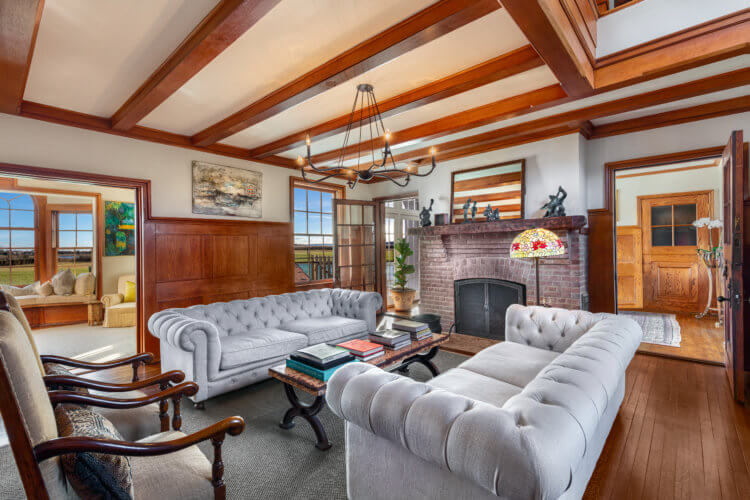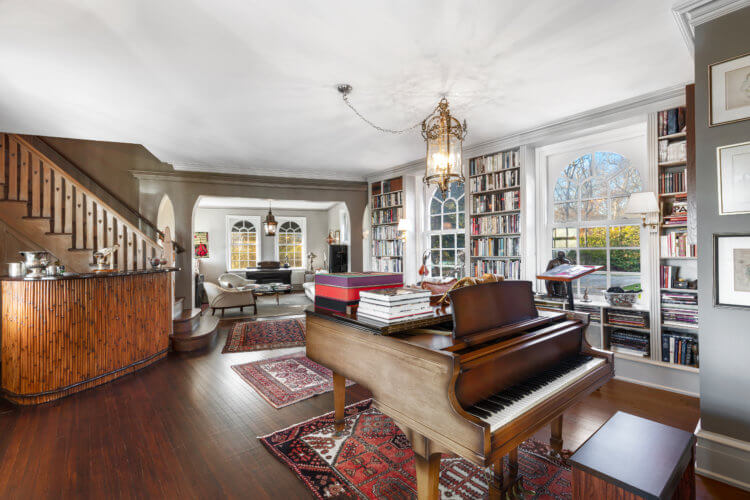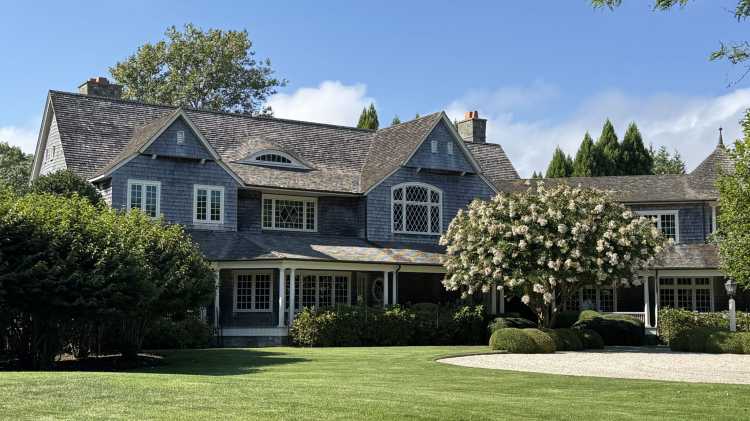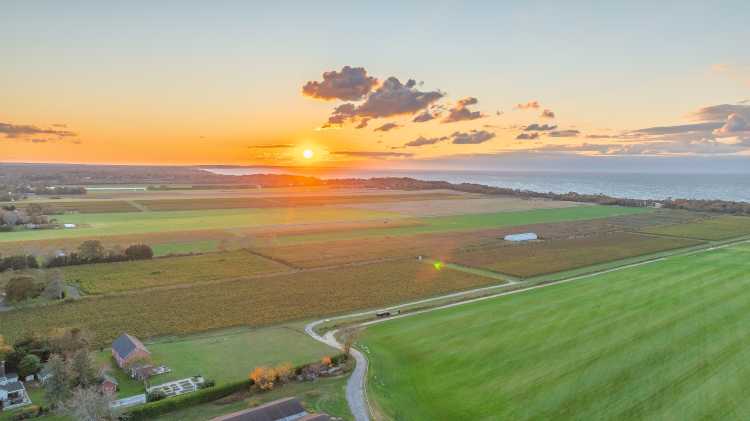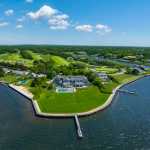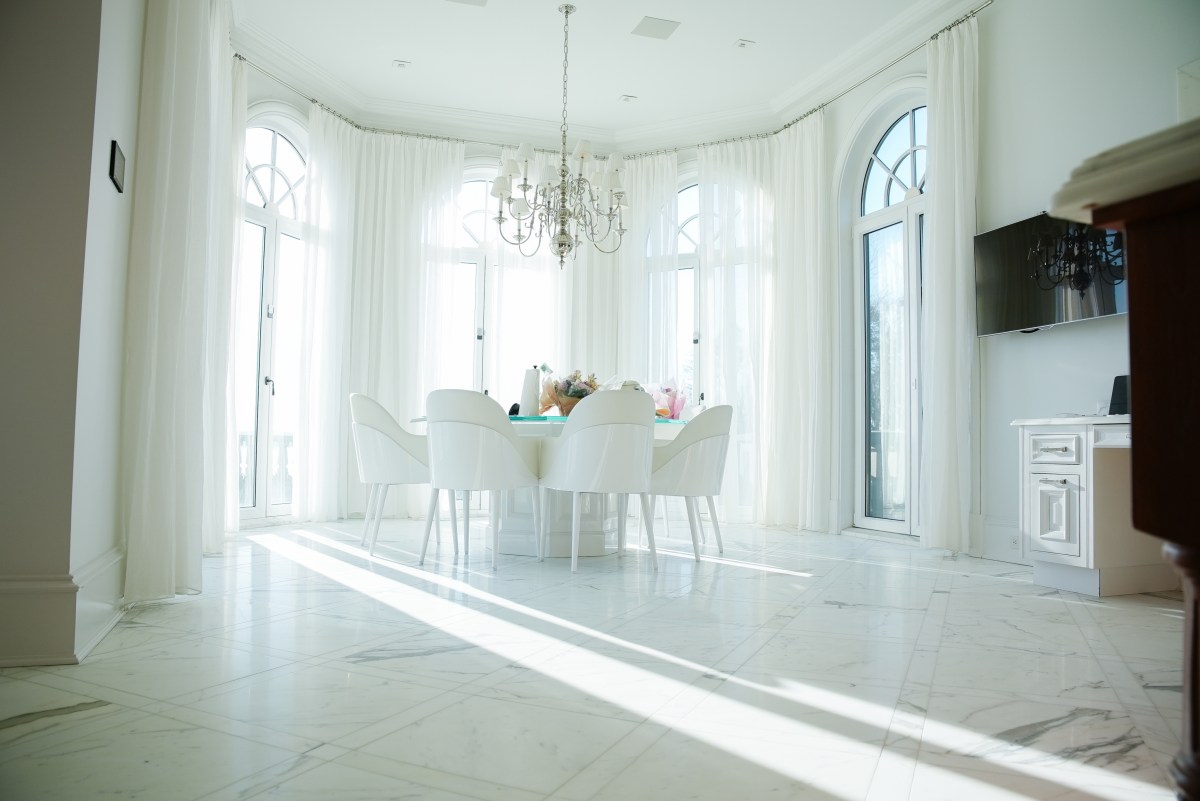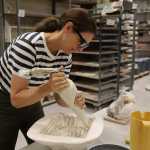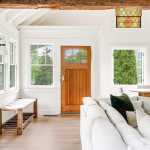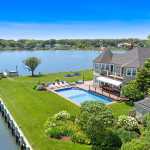“In many ways, Meadowcroft was a large and beautiful valentine from T.E. Conklin to his wife and Eyre’s Romantic style was in perfect harmony with that thought.”
That is how Michael McKenzie described the home’s beginning in Meadowcroft: A Century of Elegance in the Hamptons, written in celebration of the Quiogue house’s centennial in 2004. In essence, the home has its own love story that still continues today.
At the turn-of-the-century, Meadowcroft estate resembled an English country estate with a working 100-acre plus farm across the street. Today, the seven-acre holding on Quantuck Bay retains that same feel, enduring as one of the most celebrated properties on the East End.
The last remaining Long Island home designed by the noted architect and House & Garden (now HG) magazine founder Wilson Eyre is now on the market. The property was listed for $13 million in early January with Enzo Morabito of Douglas Elliman.
The industrialist Theodore Eaton Conklin commissioned Eyre to build the Arts and Crafts-style house, for which he was known, in what was then a meadow in 1902. As the story has it, Conklin’s wife, Emma, felt he worked too much, but when he was out east, near the sea, he was present and ready for time spent with family.
“The Conklins became true patrons of Eyre’s formidable art and neither patron nor artist waivered [sic] on the road to achieving aesthetic excellence with Meadowcroft, a masterpiece several years in the making,” wrote McKenzie.
Louis Comfort Tiffany, an artist and designer best known for his stained glass work, was a friend of Conklins, and he created the lighting in the home. Tiffany used Conklin’s metal fabrications in brass and bronze for his famed lamps (His business was around the corner from T.E. Conklin Brass & Copper on Lafayette Street in lower Manhattan). The gated pillars, for instance, are topped by two stained glass and bronze lamps, handmade by Tiffany.
“The Romance of Meadowcroft is an intoxicating vision, created as a duet between architect and original owners, and continues to captivate both its inhabitants and visitors with its presence. Meadowcroft has a gentile, lyrical and pastoral poetry to it, a cottage, if albeit a large one, whose allure is only furthered by its almost magical proximity to the sea.”
Conklin and his wife wanted all seven bedrooms to face the ocean and they wanted the home to be divided into wings for separation.
“Set to task, Eyre must have decided to enjoy the challenge, literally designing Meadowcroft as a classic his and her house, “McKenzie wrote. “The rooms to the East were ‘her’ rooms, centered on the kitchen and dining rooms, the rooms to the West were ‘his,’ the bar and billiard room, where the drinking and smoking took place, those activities not welcomed elsewhere in the house.”
Despite its size, at 9,000 square feet, Meadowcroft was “designed to function as a place to live and entertain, a memorable beach house with all the whistles and bells, not an imposing mansion made for power brokering.”
The Conklin family has strong roots on the South Fork with Conklin’s grandson, Ted, who was born in the house, becoming the village mayor of Westhampton Beach. Today, many will recognize the name of his great grandson, also Ted Conklin, the owner of the American Hotel in Sag Harbor. Five generations of the Conklins enjoyed the house before selling it in 1989.
In the summer of 2000, as the story goes, Lynn Krominga, a former general counsel to Revlon, was boating in the Quantuck Bay with her husband, Amnon Shiboleth, an international lawyer, when she became enamored by the home. He quietly found out the house was available.

“The truth is, though, I bought it for Lynn,” he said in the book. “She was in love with the house from the moment she saw it and I am in love with her so I wanted her to have
it . . .” he said in the book.
They began a $2 million renovation in 2004, according to The New York Times. Now an eight-bedroom and seven-and-a-half bath home, it has retained many of its original details that set this estate apart from others across the East End.
Among them are Tiffany lamps and sconces. Today, an iron gate leads to a long driveway lined with hedges and 100-plus-year-old rhododendrons. The house with its white uneven exterior — not stucco wrote McKenzie, but rather a mixture of plaster and white sand that was then beaten with bayberry bushes — has a red clay roof made with terracotta tiles that were imported from France. Arched double-doors lead to an impressive entry with an old-world feel with wood-paneled walls.
The home still features original woodwork, hardware and other special details such as the original 1904-engraved door knocker and the original double-swing carriage doors, Morabito’s team says. There are also a number of bespoke fireplaces.
Other features include a brick-ceilinged basement, a movie screening room, a billiards room — there’s even an outdoor billiards table — a gym, and staff quarters with a separate entrance.
There is also an oversized swimming pool that overlooks the bay, a dock, and a small cottage and accessory buildings.
“Meadowcroft is a very charming abode that reveals the magic of its vision quietly, its enormous catalogue of details seamlessly fitting into a very ‘cozy’ house, which ends up topping 9000 square feet,” the author wrote. “The woodwork, the bastion of Arts & Crafts, will win you over, even if you don’t like Arts & Crafts, and the shape, forms, and glasswork of its many windows are works of pure artistry. A walk around the house and grounds, no matter what season, is inspiring. It is no wonder that Emma Conklin stayed unwaveringly at Meadowcroft right to the end of her years.”
The seaside retreat remains private enough that you may just be able to imagine yourself there at the turn-of-the-century with your own love.
This article appears in the February 19, 2021, issue of Behind The Hedges.
Email tvecsey@danspapers.com with further comments, questions or tips. Follow Behind The Hedges on Twitter, Instagram and Facebook.
